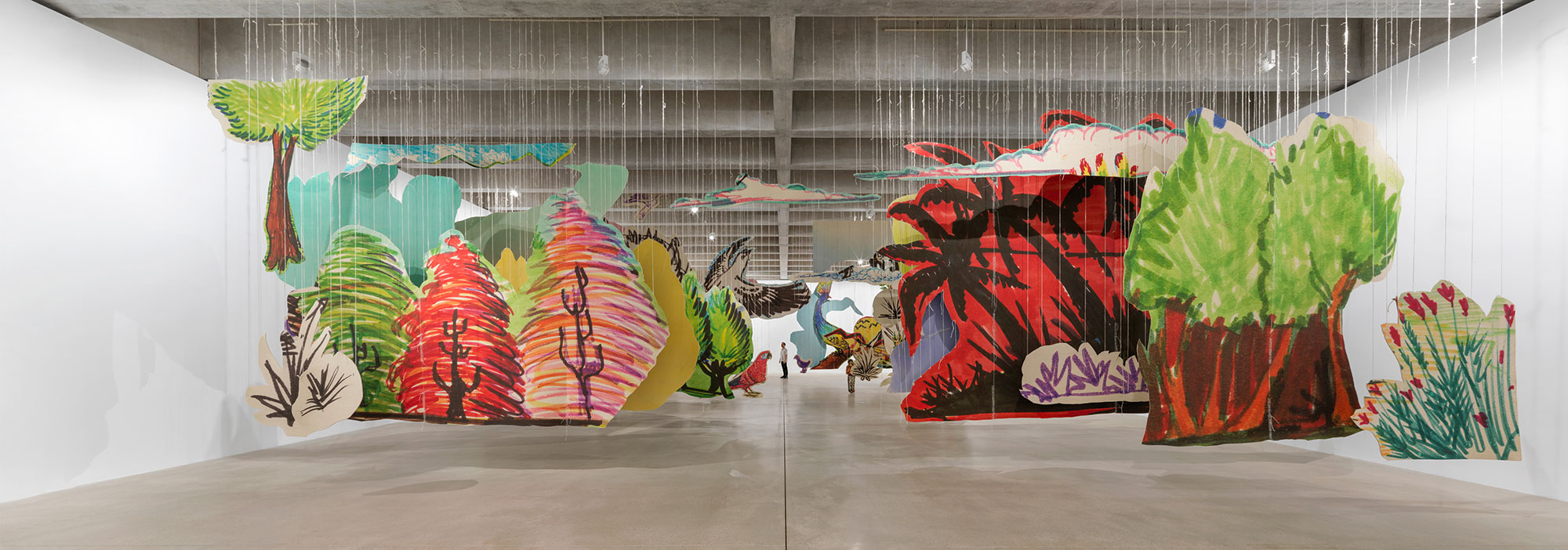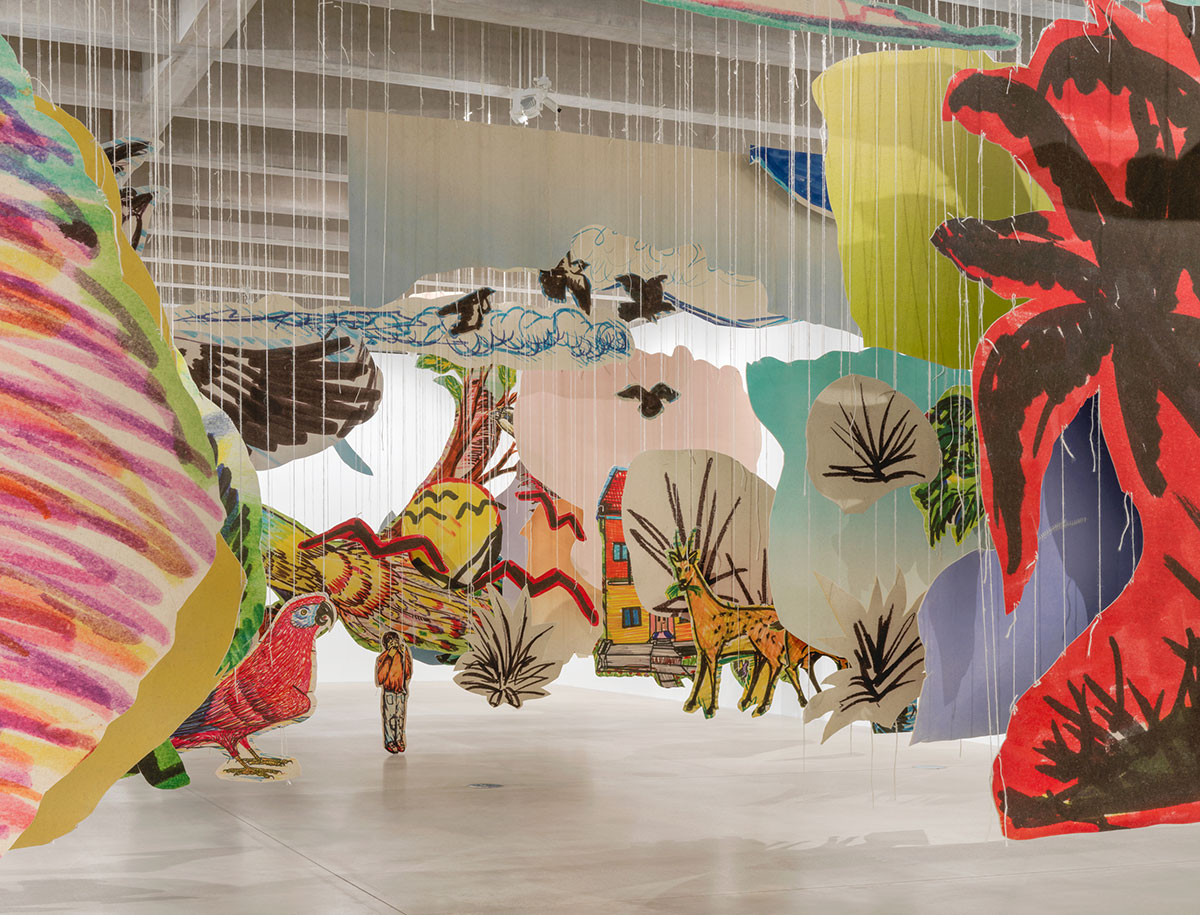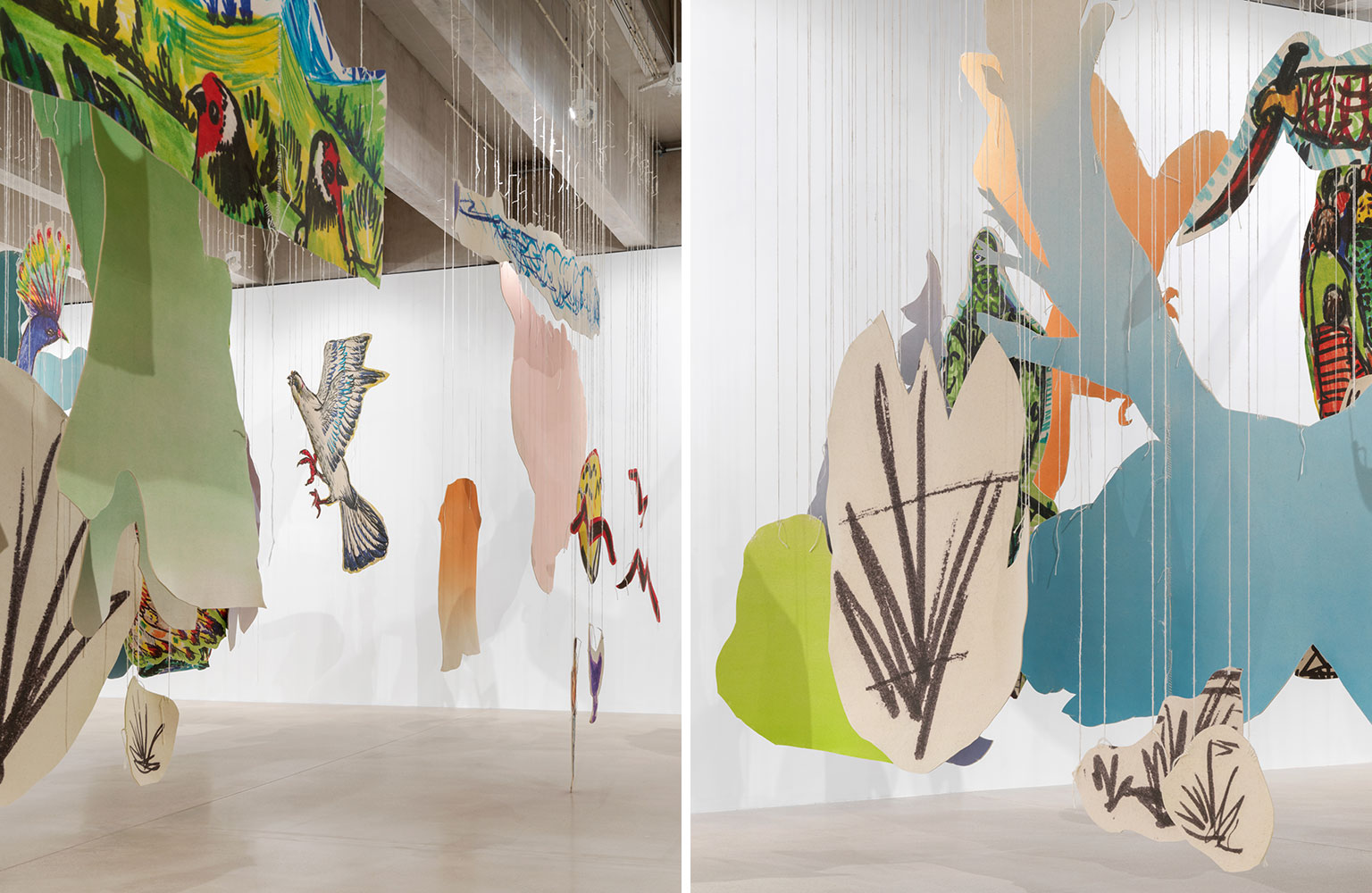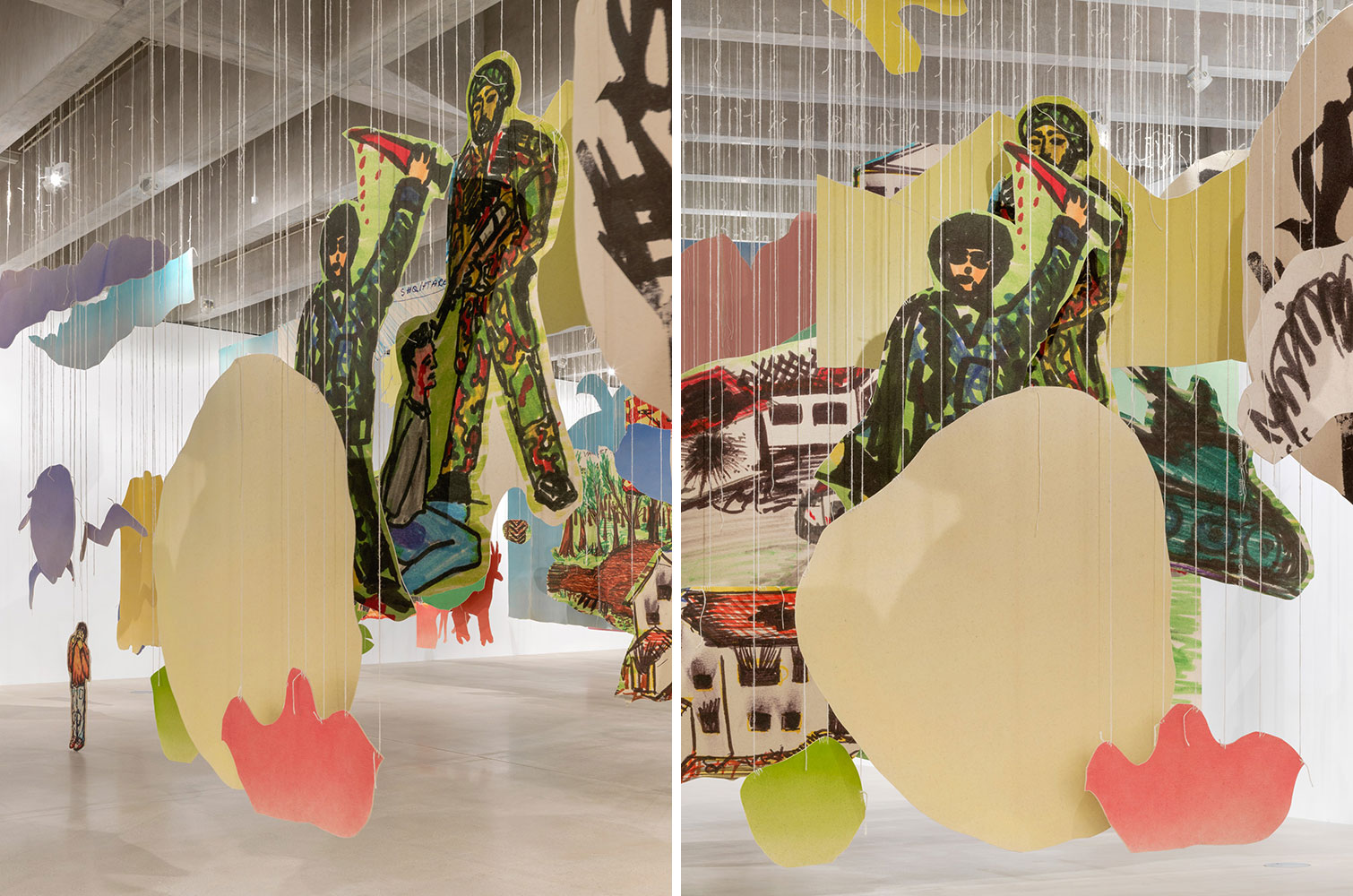PRESENTATION: Petrit Halilaj-Very volcanic over this green feather
 Emerging from his personal experiences, Petrit Halilaj’s work is deeply connected with the recent history of Kosovo and the political and cultural tensions in the region. His practice instrumentalises museum exhibition-making to reflect on individual and collective memories, freedoms and identities, and the re-evaluation of private and public histories.
Emerging from his personal experiences, Petrit Halilaj’s work is deeply connected with the recent history of Kosovo and the political and cultural tensions in the region. His practice instrumentalises museum exhibition-making to reflect on individual and collective memories, freedoms and identities, and the re-evaluation of private and public histories.
By Dimitris Lempesis
Photo: Tate Archive
Deeply connected to Kosovo’s recent history, Petrit Halilaj frequently incorporates materials from his native country and re-elaborates them through installation, performance, textiles, drawing and video. Halilaj’s work explores issues related to individual memory and cultural identity. For his first solo exhibition in the UK Petrit Halilaj presents at Tate St Ives the major new installation “Very volcanic over this green feather”, the exhibition stems from Halilaj’s own personal story, while also bringing forward the collective trauma of the Kosovar Albanian people and other survivors of conflict. Displaced by the Kosovo War (1998–9) as a thirteen-year-old, Halilaj and his family lived at the Kukës II and Lezhe-Shengjin refugee camps in Albania in 1999. For this exhibition, Halilaj presents a poignant new installation reimagining a collection of felt-tip drawings he made as a child at Kukës II. The original pictures were created under the guidance of Italian psychologist Giacomo ‘Angelo’ Poli, who was taking part in a humanitarian mission at the refugee camp. Poli supported the children in communicating their experiences through drawing, encouraging them to document the destruction they had experienced but also to imagine ideal, fantasy worlds for the future as a tool to escape the present. In a period of 15 days, Halilaj created 38 drawings, all of which have been preserved by Poli until today. After Poli’s departure, Halilaj continued to create drawings of his experiences, one of which he showed to Kofi Annan, then Secretary General of the United Nations, when he visited Albania. Since 1999, Poli has become a close friend and supporter of Halilaj, who is now an established artist based in Berlin. In 2021 Halilaj revisited the original pictures he made with Poli for the first time in over two decades. Informed by those conversations, Halilaj has created an immersive environment within Tate St Ives’s largest gallery, magnifying and reconstituting fragments from the original drawings on a grand scale to reflect on personal and collective memories. Fusing the atrocities he witnessed with his birds and fantastical visions, the exhibition presents a powerful meditation on conflict, hope and memory. An adjoining gallery space offers additional information about the Kosovo War and the political and social contexts which continue to impact the country and Kosovar society. This gallery also features materials, videos and photographs from Halilaj and Poli’s archives.
Kosovo’s independence as an Autonomous Province was diminished during the 1980s. Peaceful mass protests rejected the increasing losses of self-rule that were imposed under Serbian sovereignty. In 1989 Serbia abolished Kosovo’s autonomous status and increased the presence of Yugoslav forces in the region. Protests escalated into armed conflict in Kosovo across the following decade. In 1997–8 a campaign of destruction and violence by Serb police and Yugoslav military forces killed an estimated two thousand ethnic Kosovar Albanian people, inciting the Kosovo War. The Kosovo War is recorded as beginning between January and March 1998 and ending in June 1999. The Kosovo Liberation Army fought forces of the Federal Republic of Yugoslavia in an uprising against the persecution of Kosovar Albanians. During 1998–9 Petrit Halilaj and his family sheltered in cities across Kosovo as they travelled to Albania to find refuge at the Kukës II and Lezhë-Shëngjin camps. After contentious negotiations and failed international diplomacy NATO intervened in the Kosovo War in early 1999. The NATO airstrikes on Serbia’s military targets remain controversial. The campaign commenced without approval by the United Nations (UN) Security Council and caused a recorded 488 deaths, including many refugees. Kosovo declared independence from Serbia on 17 February 2008, coordinated with NATO’s decision-making ‘Quint’ group, consisting of France, Germany, Italy, the UK and the US. Over half of the 193 UN member states recognised the proclamation, including 3 permanent members of the UN Security Council: France, the UK and the US. member states in 2021. The Kosovo War and its aftermath caused the estimated displacement of over one million Kosovar Albanian people. A Humanitarian Law Centre database documents the names of 13,535 victims of the war, including 10,812 Kosovar Albanians; 2,197 Serbs; 526 Roma, Bosniaks and non-Albanians; and a further 1,603 missing people whose war-victim status is unconfirmed. Most were civilians.
Photo: Petrit Halilaj: Very volcanic over this green feather, installation view at Tate St Ives, 2021. Photo: Tate Photography (Matt Greenwood)
Info: Curator: Anne Barlow, Assistant Curator: Giles Jackson, Tate St Ives, Porthmeor Beach, Saint Ives, Cornwall, United Kingdom, Duration: 16/10/2021-16/1/2022, Days & Hours: Daily 10:00-18:00, www.tate.org.uk






